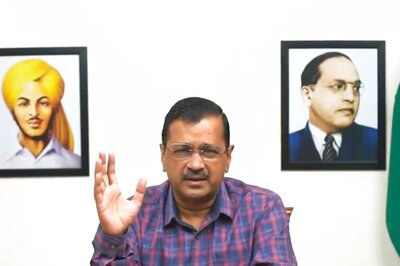
views
Two years after the flagship Ayushman Bharat scheme was launched, Prime Minister Narendra Modi on Saturday rolled out the National Digital Health Mission (NDHM) from the majestic Red Fort as he delivered his seventh straight Independence Day speech.
The NDHM aims to create a digital ecosystem where every Indian will be given a health ID with a digital health record. This personal health record will be an account tracking ailments, tests and treatments. News18 explains the important contours of the new mission.
What is the National Digital Health Mission?
At its core, NDHM seeks to create a health informatics organisation and a digital ecosystem for health services in the country catering its citizens, health professionals, public hospitals as well as institutions in the private sector. The NDHM will be an executing body for the National Digital Health Blueprint (NDHB) which aims to, among other things, create a state-of-the-art digital health system for managing core digital health data along with the infrastructure required for its seamless exchange.
According to the NDHB, released by the government last year, NDHM will comprise components such as national health electronic registries; a federated electronic health records framework for patients, healthcare providers and researchers; a national health analytics platform and unique health IDs.
This means that personal health records, unique health identifiers, health master directories on human resources and hospitals will be made digitally available, and will be stored on community cloud infrastructure. The electronic health records of an individual can be accessed across systems with consent and they can be updated as and when the person accesses healthcare.
What will be the outcomes of NDHM?
The government’s NDHB report outlines the outcomes that have to be achieved. Key outcomes include providing easy access to electronic health records to citizens, using longitudinal health record data, a patient’s health records and standard protocols to prevent unwarranted tests, and ensuring privacy of personal health data along with consent-based access to electronic health records.
What services will be provided as part of the mission?
The services provided under NDHM can be categorised on the basis of who is availing them or who they are targeted for.
As part of services for citizens, NDHM seeks to provide a single and secure health ID to all citizens. It will create a personal health record, a national health portal for the mission, a mobile application and dedicated call centres will be established and citizens can get digital referrals, consultations and online appointments.
Registries and directories will be maintained on diseases, clinical establishments, healthcare professionals. While the doctors will get a unique identifier which would be separate from the license they receive for practising medicine.
The NDHB report states that among services provided by and for healthcare providers and professionals includes among others, a summary care record; an open platform to access emergency services, digital referrals and case transfers; clinical decision support and hospital digitization.
What directories will be created in the first phase of the National Digital Health Blueprint?
As per the NDHB report, a directory of all health facilities (hospitals, diagnostic centres, pharmacies, and clinics), doctors, nurses and paramedical directory and health workers, allied professionals directory will be created.
What does the National Digital Health Blueprint say about consent for providing access to personal health records?
According to NDHB, every access to each record will require the explicit consent of the individual and a consent manager system approach will be adopted. Consent is to be obtained at the primary source of its capture and retention at the facility level, before collection of data and before its processing and/or sharing.
Who will implement the National Digital Health Mission?
The National Health Authority, which is also the implementation authority for the Ayushman Bharat - Pradhan Mantri Jan Aarogya Yojana will helm the NDHM. The mission will be a completely government-owned body- the National Digital Health Blueprint, the base document for NDHM says. “The institutional structure must include an organization with two different arms – one to handle the policy and regulations and the other for operations and service delivery,” the NDHB report said.
Which other countries have a digital database for health systems that NDHB has studied?
While creating the NDHB, India looked at Information and Communication Technology infrastructure in the United States, the National Health Services-Digital in England and digital health records systems in South Korea.
The NHS-Digital provides services for the NHS including management of large health informatics programmes. Patient data is maintained in this digital system which facilitates electronic prescription service and referral service, the NDHB report said. In South Korea, the Ministry of Health and Welfare (MOHW) created a specialized organisation to maintain electronic health records, NDHB report added.




















Comments
0 comment